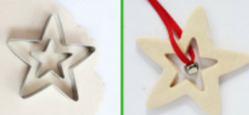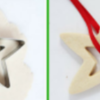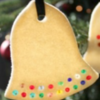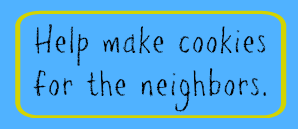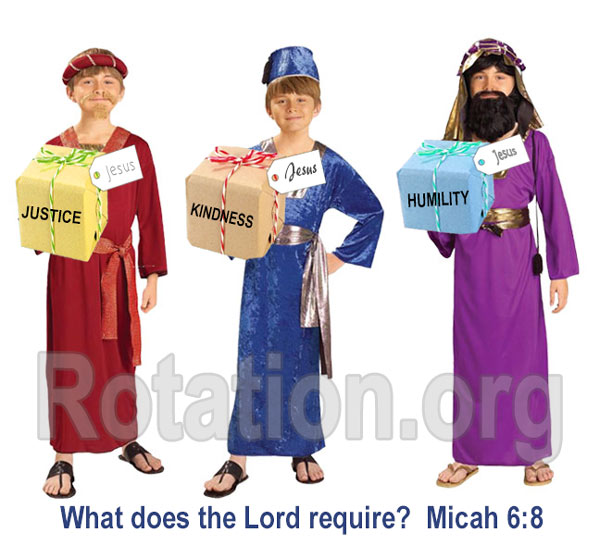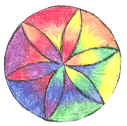Jesus' Birth through the Eyes of the Wise Men
Candle Art Workshop--The Magi
 Summary of Lesson Activity:
Summary of Lesson Activity:
Make wax chunk candles as we learn about how Jesus is the Light of the World.
Scripture Reference:
Matthew 2:1-18
Memory Verse:
“The people walking in darkness have seen a great light; on those living in the land of the shadow of death a light has dawned.” --Isaiah 9:2
Lesson Objectives:
The Children will
- Realize that Jesus is not only a “light to the world”, but that He is also a light showing them the way in the dark times of their lives.
- Understand that God’s people may be very different from each other, but we have our faith in Jesus in common.
Leader Preparation:
- Review Bible Background notes and scripture
- Gather the materials
Materials List:
- Bibles
- Candle and match
- Candle molds (one for each student): we suggest plastic coated drinking cups (like Dixie cups) but you could also use plastic yogurt cups, juice concentrate cans, school lunch milk cartons, paper cups
- Awl to punch holes in molds
- Pam cooking spray if mold is not plastic or wax coated
- Wax chunks in various colors (see advance prep)
- Clear candle wax--various retailers offer wax slabs, small wax blocks, or wax flakes
- Crock pot with plastic liner
- Boiling bags for candle wax or quart size plastic containers (to melt wax in)--you could also use a metal bowl or glass measuring cup to hold the wax
- Spoon to stir the wax
- Pot holders or oven mitt
- Wicks
- Modeling clay to seal the wicks
- Large tray with wax paper to protect the table when pouring the candles
- Small plastic bags to put the finished candles in
- Note about candle safety to go in each bag
- Masking tape to label each candle with student name
- Scissors
- Paper and pencils or pens for journaling
I am going to give some general information on how to go about creating your candles. I am also suggesting several websites for you to refer to as you come up with the best method for your class. This web site has a lot of general information on making candles, as well as information on making the wax chunk candles. This website and this website offer some tutorials on using crockpots to melt the wax. Or you may have your own favorite hobby websites to refer to!
Advance Preparation Requirements:
- Make your own candle using your preferred technique; note how long it takes the wax to melt so that you know how much time you will need before class.
- Punch holes in bottom of molds with an awl
- You may want to put the wicks in the molds for the younger classes before class starts
- Prepare wax chunks in various colors. Here are several options for doing so:
- Buy pre-made wax chunks in several colors.
- Break up (or cut) existing candles into various sized chunks.
- Create your own wax chunks. The above mentioned tutorial on chunk candles talks about making your own chunks.
Preparations on the Day of Class:
- Cover large tray with wax paper.
- Get supplies ready to melt the clear wax. The options mentioned in the tutorials include melting the wax on the stovetop using a double boiler technique, or using a crockpot.
- Once you have started the melting process, do not let the children near this area. Do not leave the melting wax process unattended.
- Stir the wax occasionally as it melts. Once it is melted, turn off the heat source so that the wax does not overheat (remember--wax is flammable).
- Use hot pads if you are picking up a metal or glass container holding the melted wax.
 Important Safety Tips!
Important Safety Tips!
- Know where the nearest fire extinguisher is in the building (you can’t be too safe)--wax can be flammable and should be treated like a grease fire--with a chemical extinguisher--and not with water. You might want to have the extinguisher in the classroom.
- Once you have started melting the wax, do not leave it unattended.
Presentation
Opening- Welcome and Lesson Introduction
Greet the children and introduce yourself and any helpers that you have. Open with a prayer.
Dig- Main Content and Reflection
Bible Story:
DO: [Have all the lights turned off in the room; have your candle and match ready to use].
ASK: Let’s pretend this room is really dark, so you can’t see anything. What would happen if I asked you to go over to that cabinet and get something for me? (Possible answers: not able to find your way there, bump into things and hurt self).
What would help you to walk through the room and find the item for me? (Possible answer: light of some sort).
DO: [Go ahead and light the candle].
SAY: You can see that the light is more powerful than the darkness. There are all kinds of light, but Jesus is the most important light. We don’t call Him a light because He shines in the dark; we call Him a light because He shows us the way, just like a flashlight or this candle could. Jesus says in the book of John (8:12) that “I am the light of the world. Whoever follows me will never walk in darkness, but will have the light of life.”
When Jesus was just a baby, someone else called Him a light. There was an old man named Simeon, who was waiting for the Savior to be born. When Mary and Joseph brought Jesus to the temple, Simeon saw Him and took Him in his arms and said: “My eyes have seen your salvation, which you have prepared in the sight of all people, a light for revelation to the Gentiles” (Luke 2: 31-32).
A light for the Gentiles—does anyone know what a Gentile is? (Someone who is not Jewish, who is not from Israel). In our story this month, we are learning about the very first Gentiles who came to worship Jesus. Jesus came to be the Savior of both the Jews and the Gentiles. Most of us in this room are probably Gentiles.
DO: Find Matthew 2: 1-18 in the Bibles. Read—or have the class read—the story. You could also have them tell you the story in the later weeks of the month.
Ask a few questions after the Bible story: Were the magi from the same country as Jesus and His family? (No)
What did they do when they saw Jesus? (bowed down and worshipped Him, gave Him gifts)
Did Jesus come to be the Savior just of the people who lived in the country of Israel or did he come for people all over the world?
Activities:
SAY: We are going to make candles to help us remember that Jesus is a light to the world.
Set out the containers filled with the wax chunks of various colors.
Each child should have the following: candle mold (with hole already punched in bottom), length of wick, pencil, small piece of clay. Have them thread the wick through the hole in the container and gently pull the wick tight. Have them use a small piece of clay to hold the wick in place on the outside bottom of the mold and to seal the small hole. You or the guides should then spray each mold with a little Pam (if you think it is necessary with the molds you are using).
Instruct the children to fill their candle mold with the chunks of colored wax—they can use whatever colors they want and in whatever order (for example they could layer different colors or just mix them randomly). They should hold the wick in place in the center as they put the wax chunks in. They can fill the mold about ¾ full.
As they are doing this, ask them the following questions:
- What do you notice about the wax pieces—are they all the same? (different colors, different sizes).
- What do these wax pieces remind you about the family of God? (filled with all sorts of people, people who are different from each other).
- What are some of the ways that God’s people differ from each other? (different countries, different talents, men & women, adults & children, etc.).
- What do we all have in common? (Jesus is our Savior)
Have them take a piece of masking tape with their name on it and place it on their mold. Tell them you will be pouring the hot melted wax into the molds to finish the candles. It may take a while to cool, so they will get their candles next week. Collect the candles and put them on the tray. Pour melted wax into each mold. If there is any wax left over, you can let it harden in the bag and use it again next week.
After class: When the candles have started to harden, you can move the tray of candles to a safe spot for the week. Once they are completely cooled and hardened, you can remove them from the molds. Take the masking tape with the student’s name and put it on a plastic bag. Put the candle in the bag along with the candle safety label. They can be handed out the next week.
Reflect:
Let’s review the memory verse: “The people walking in darkness have seen a great light; on those living in the land of the shadow of death a light has dawned.” --Isaiah 9:2
Without Jesus, we are in the darkness. We are in the darkness of sin and death. But Jesus is the light—He lights our way to heaven and He shows us the way to live here on earth. He can help all people see God’s love and forgiveness. We’re going to think a little bit more about darkness and light with our journal questions.
Journaling (last 5 minutes of class):
Help the guide to hand out pencils/pens and the student folders. Place the sticker with the journaling topic on a blank page. The children should find a place to sit quietly and think and write in their journals. You and the guide may need to help the younger children with their writing. Another option for younger children is to draw a picture about the topic.
Journal Topic: Think of a time when things seemed “dark” and upsetting. How was Jesus a light in that situation?
Closing
Have the children help with the cleanup and then close with a prayer.
Closing Prayer: Dear Jesus. Thank you for coming for all people. Thank you for coming to be my Savior. Please light the way and show me the way that you want me to live. Amen.
Additional Suggestions - Age Adaptations
Younger students
They should know that the story is from Matthew, but they don’t need to know the chapter and verse references of the other passages in the discussion. Grades 1 & 2 may need more help preparing their mold—or you could prepare their molds ahead of time.
Older students
If there is time, talk a little bit more about the “dark” times of their lives—why was that time upsetting, how could or did Jesus help them in that situation.
EDITOR'S NOTE:
The following alternative approach was posted by member "Mabethea" on January 2005:
We did this but used gel candle kits from Oriental Trading item #48/20170 $29.95 for a kit that makes 12 everything included (tubes of gel, colored wax chunks, wicks, glass containers)...and NO heat involved at all.
Editor's Note: After posting this lesson, Cathy Walz updated it with these field-test notes:
We just finished this rotation in January and I wanted to add a few notes.
- We used the plastic-coated Dixie Cups as molds and these worked great--you could just tear the paper away when the candle was set.
- We discovered that we could send the candles home with the students that day--the candles set up enough by the end of class. You could hurry that process along a little by putting them in a pan of ice (or snow--depending on your location
 ).
).
The kids loved this project.  Even the 5th and 6th grade boys couldn't wait to get home to light their candles!
Even the 5th and 6th grade boys couldn't wait to get home to light their candles!
In talking with some of the students, they also seemed to "get" the concept that Jesus is the light of the world and came for all kinds of people (all kinds of people = different colored chunks in the candle).
A lesson written by Cathy Walz
A representative of Rotation.org reformatted this post to improve readability.
In addition to checking out all of our public lesson ideas, don't miss the Rotation.org Writing Team's Magi lesson set ~ Among many wonderfully creative lessons, it includes a detailed art sculpture lesson plan where students learn the "hidden" meaning of Matthew 2:11's familiar words, "they bowed down and worshiped him."
![]() Here is a great tutorial on teaching children to sew lavender bags from Red Ted Art.
Here is a great tutorial on teaching children to sew lavender bags from Red Ted Art.
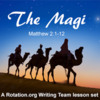
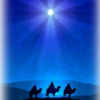

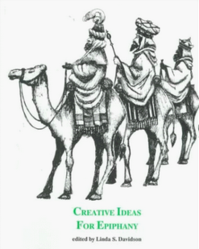

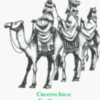

 Important Safety Tips!
Important Safety Tips! ).
). Even the 5th and 6th grade boys couldn't wait to get home to light their candles!
Even the 5th and 6th grade boys couldn't wait to get home to light their candles!
